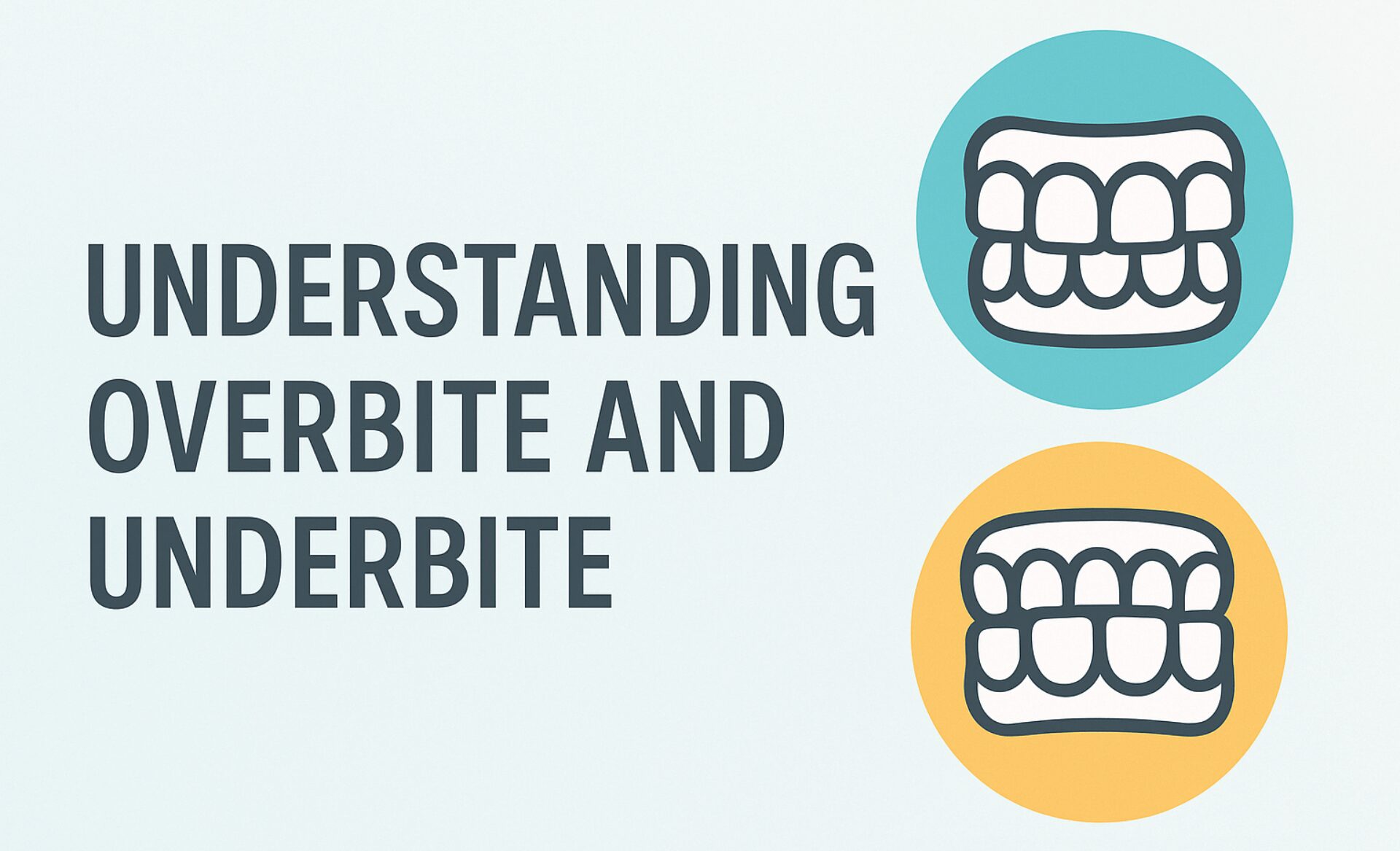An overbite occurs when the upper teeth significantly overlap the lower teeth, while an underbite occurs when the lower teeth extend beyond the upper teeth. This article details the differences between overbite vs underbite, their causes, symptoms, and treatment options.
Key Takeaways
- Overbites and underbites are types of malocclusion characterized by misaligned teeth, impacting both function and aesthetics.
- Genetics and environmental factors, such as childhood habits, contribute to the development of overbites and underbites, necessitating early intervention for effective treatment.
- Treatment options include braces, Invisalign, and orthognathic surgery, with preventive measures crucial for managing and avoiding complications associated with malocclusions.
Understanding Overbite and Underbite
An overbite is characterized by the upper front teeth having more coverage than normal over the lower front teeth, often observed in those with a comparatively smaller or shorter lower jaw. Conversely, an underbite is identified when the lower jaw juts out past the upper jaw, causing the lower teeth to stick out than their upper counterparts.
The primary distinction between these two conditions centers on dental alignment. In an overbite situation, there’s a notable covering of the lower teeth by those of the upper set. Conversely, for an underbite where it’s evident that your bottom set protrudes beyond your top set. While some degree of overlapping among front teeth is typical, when this overlap extends beyond 2-3 mm it defines what dentistry considers excessive.
Misaligned bites such as overbites and underbites fall into a broader category called malocclusion—this refers to any form of misalignment involving how both sets line up against each other—and can include variations like anterior crossbites and posterior crossbites along with open bites. To standard cross-bite cases. Detecting these issues entails examining whether there’s too much cover from above or an undue prominence below amongst one’s tooth arrangement.
Addressing bite irregularities isn’t just about aesthetics, but also concerns practical functionality. Recognizing them correctly leads to suitable corrective measures which not only enhance visual appeal but also guarantee optimal operation within oral mechanics.
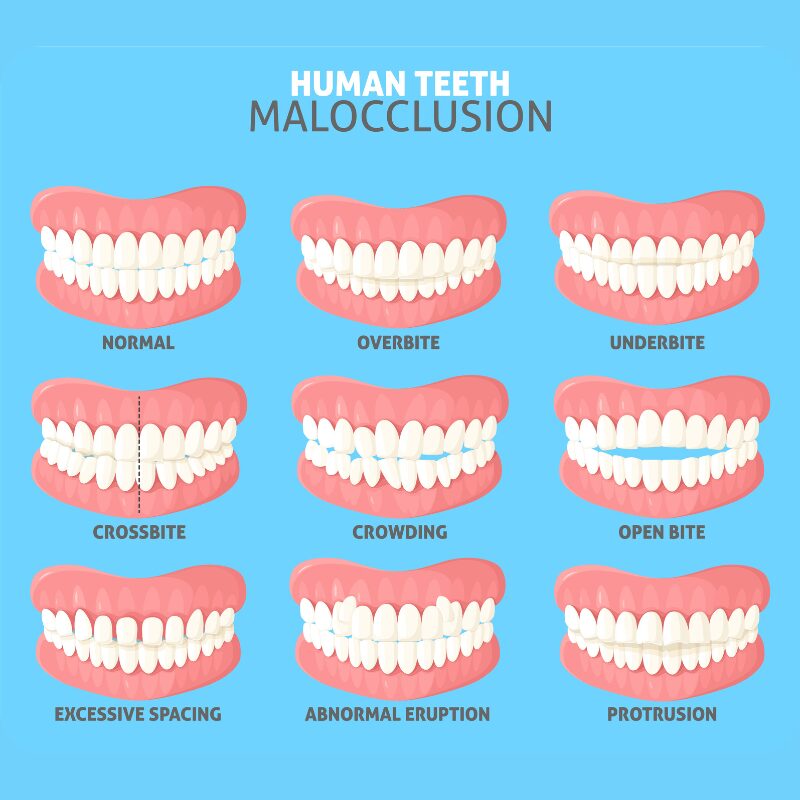
Causes of Overbite and Underbite
The origin of overbites and underbites can frequently be traced back to genetics. It’s possible for misalignments such as these to run in families, which means that if your ancestors had problems with their bite alignment, you may have an increased likelihood of experiencing the same issues. A small lower jaw, for example, might stem from a minor genetic predisposition towards having a slight overbite.
Certain environmental influences significantly affect the development of malocclusions. Engaging in habits during childhood like thumb sucking or extended use of pacifiers has been known to interfere with the natural progression pattern of jaw growth potentially resulting in either an overbite or underbite. When teeth are crowded or twisted, they can alter how well upper and lower jaws align together, leading to issues regarding proper bite alignment.
Differences between rates or amounts of growth within the jaws stand as another frequent contributor to dental complications.
- When the upper jaw doesn’t develop enough, it can lead to an underbite, where the lower teeth extend beyond the upper teeth.
- On the other hand, if the lower jaw grows excessively, this can also result in an underbite due to the imbalance.
- In contrast, if the lower jaw is significantly smaller than the upper jaw, the result is often a pronounced overbite, where the upper teeth extend far beyond the lower teeth.
Appreciating what factors lead up to these types of dental troubles plays a crucial role both averting treating them more effectively overall!
Symptoms and Complications of Overbite and Underbite
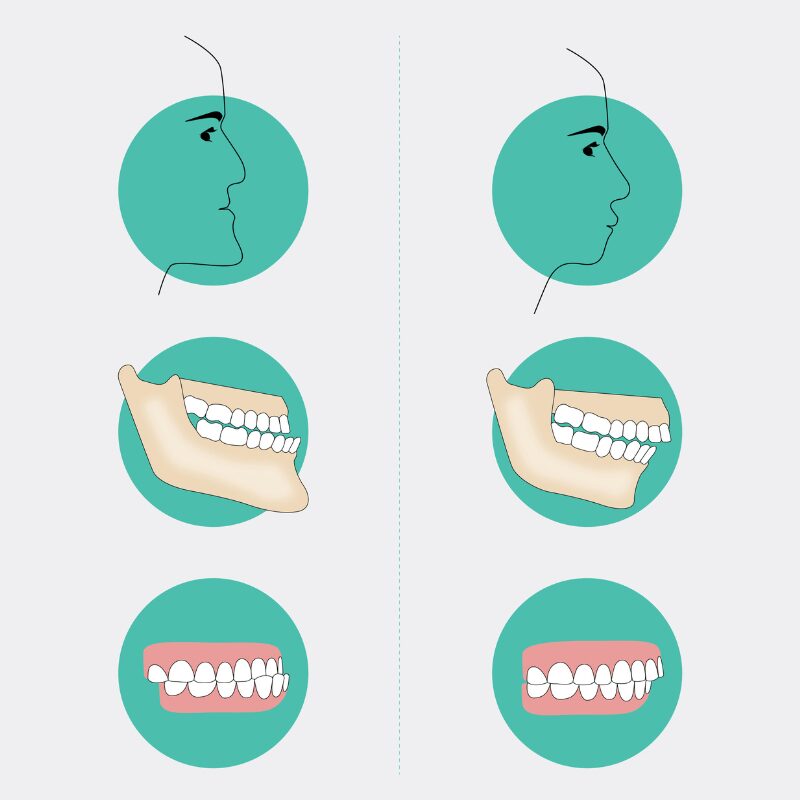
Identifying the signs of overbites and underbites is crucial for early intervention. These symptoms often manifest as discomfort in the jaw, challenges with biting, and noticeable protrusion of teeth. If these conditions are not addressed promptly, they can result in issues including erosion of the teeth, development of gum disease, and ongoing pain in the jaw.
The subsequent sections delve deeper into specific symptoms and potential ramifications. Being aware of these details enables you to pursue appropriate treatment swiftly to prevent more severe outcomes associated with untreated overbites and underbites.
Symptoms of Overbite
Symptoms of an overbite frequently involve upper front teeth that stick out noticeably. Individuals might struggle to bite into food correctly and could suffer from jaw pain as a result of the misalignment. These indicators can assist orthodontists in pinpointing issues with the patient’s bite and crafting suitable treatment strategies.
When dealing with extreme instances, a pronounced overbite may cause considerable wear on the teeth and discomfort during mastication. Early detection of these symptoms is crucial in avoiding additional problems and guaranteeing successful intervention.
Symptoms of Underbite
Symptoms of an underbite usually include:
- The projection of lower front teeth past the upper teeth
- An enhanced visibility or prominence of the chin or lower jaw
- Challenges with chewing food properly
- Discomfort in the jaw caused by misalignment when biting
Such a condition can markedly impact a person’s comfort and oral health.
These symptoms might influence speech clarity, complicating correct pronunciation of specific sounds. Early detection is important to ensure prompt and successful treatment.
Complications if Left Untreated
If left untreated, overbites and underbites can lead to severe complications. Misaligned teeth can cause
- Pain and discomfort
- Low self-esteem
- Significant tooth wear
- Facial aesthetic problems
More serious consequences include speech problems, difficulty chewing, and an increased risk of tooth wear and tooth loss. Proper treatment is crucial to avoid these complications and maintain overall oral health.

Diagnosing Overbite and Underbite
A comprehensive evaluation of teeth and jaw alignment is necessary to diagnose overbites and underbites. Dental experts employ hands-on assessments and X-ray imaging to determine the existence and extent of these bite conditions. It’s vital to have frequent dental examinations for keeping track of one’s bite alignment, as this allows for early detection and intervention when problems are identified.
The emergence of symptoms like jaw pain or challenges in speaking could signal underlying issues with one’s bite, necessitating a professional assessment. Neglecting such indicators may result in persistent headaches, neck discomfort, among other health concerns, thereby underscoring the importance of prompt diagnosis and treatment.
Treatment Options for Overbite and Underbite
A variety of treatment methods exist for correcting overbites and underbites, ranging from traditional braces to clear aligners such as Invisalign, and even orthognathic surgery for more severe instances. Addressing these issues is not merely cosmetic. It’s essential for maintaining good oral health.
The chosen method of treatment will depend on the particular nature and severity of the malocclusion being addressed. The main strategies include utilizing metal braces, employing Invisalign treatments, or resorting to orthognathic surgery in certain cases.
Metal Braces
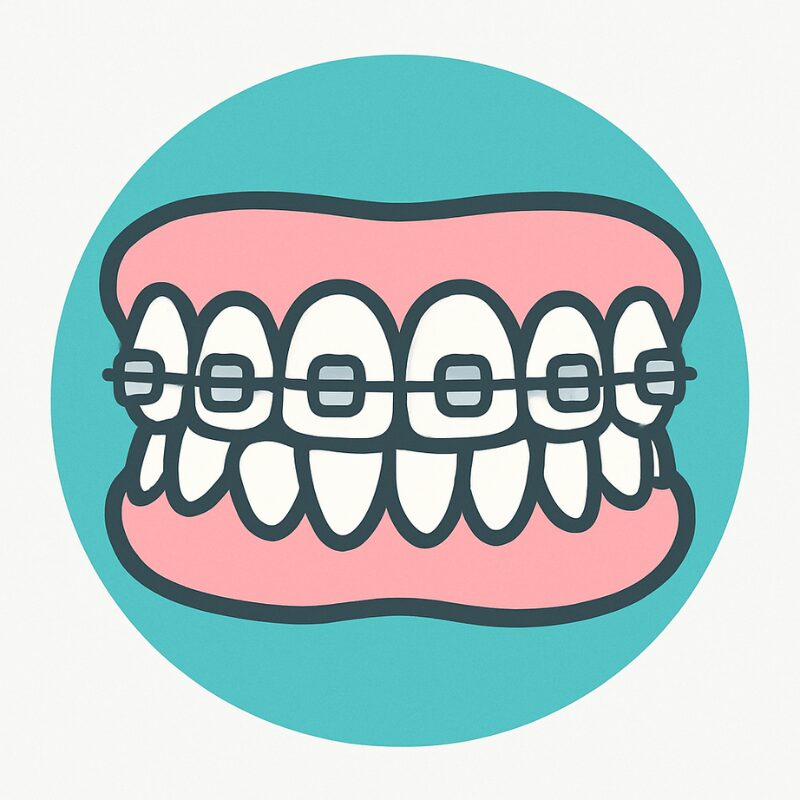
Orthodontic treatment utilizing metal braces is widely employed to amend misalignments of the teeth. By exerting persistent pressure over time, these braces coax teeth towards their correct placement. Especially in severe cases requiring substantial alignment, metal braces are known for their effectiveness.
The process necessitates periodic tuning and may span from a few months to multiple years based on how acute the dental disarray is. Depending on how long the period might be, employing metal braces stands as a dependable method for securing precise bite alignment and orderly positioning of teeth.
Invisalign Treatment
Invisalign therapy employs transparent aligners to rectify mild to moderate overbites and underbites, using a system of removable aligners that offer the flexibility to be taken out during meals and dental care. The majority of this treatment can be administered from the comfort of home, supplemented by virtual consultations for added ease.
For those seeking ideal outcomes with Invisalign, it’s essential to wear these clear aligners diligently for 20 to 22 hours daily. Adhering consistently to this regimen is crucial for successful correction. The treatment is customized according to personal dental requirements, guaranteeing effective teeth alignment.
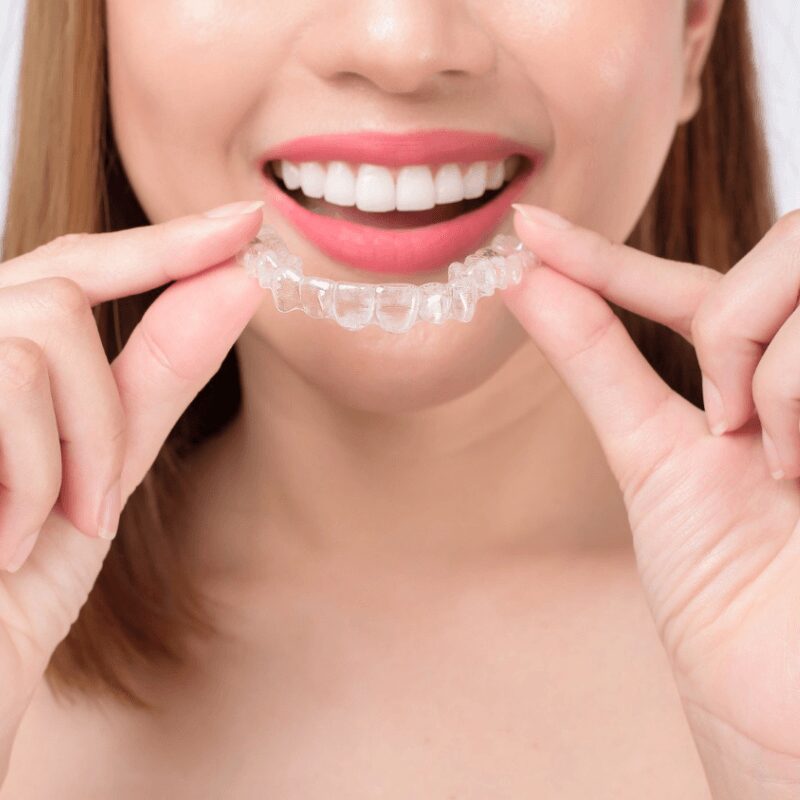
Orthognathic Surgery
Corrective jaw surgery, also known as orthognathic surgery, is often required for individuals experiencing significant misalignments of the jaw. When traditional orthodontic approaches prove inadequate, this surgical intervention can be considered to resolve severe alignment issues that affect both aesthetics and function.
For those facing intricate dental concerns, it’s imperative to seek advice from dental experts to determine whether jaw surgery is warranted. Undertaking such a procedure can markedly improve life quality for patients dealing with pronounced overbites or underbites by addressing their functional problems.
Preventive Measures and Early Intervention
Taking preventative actions and initiating early treatment is crucial in controlling conditions such as overbites and underbites. It’s essential to dissuade the habit of thumb-sucking and limit the use of pacifiers beyond the age of 3 for healthy dental growth. Initiating consistent dental examinations from the age of 1 can facilitate prompt detection of any emerging oral health problems.
By engaging a dentist’s services promptly, one can halt Development of these issues, minimizing subsequent complications’ risk. Commencing orthodontic care at an early stage may streamline and accelerate later dental interventions, resulting in improved results.
Maintaining Oral Health During and After Treatment
Preserving oral health is of utmost importance while undergoing orthodontic treatment. To effectively eliminate plaque, it’s essential to brush your teeth and gums five times daily. Employing a toothbrush specifically engineered for use with braces can improve the cleaning process around these devices.
Care after completing orthodontic therapy is just as critical. Utilizing a floss threader for interdental cleaning and steering clear of specific foods such as hard candies and uncooked vegetables helps protect braces from harm while upholding dental cleanliness. By adhering to these habits, you can guarantee that your teeth stay in good condition both during the course of treatment and following its conclusion.
Gain a Confident Smile with Professional Care
Obtaining professional dental care can greatly enhance the function and appearance of your bite. Such care not only secures optimal oral health, but also elevates self-esteem by enhancing the look of your smile. A better-looking smile may contribute to heightened confidence and enriched social engagements.
It is crucial for individuals with bite problems to prioritize a professional evaluation and treatment from a dental expert.
Summary
In summary, it is vital to comprehend and tackle both overbites and underbites to preserve excellent oral health and secure a smile that exudes confidence. Contact us to identifying signs, grasping the underlying reasons, investigating available treatment options, and implementing preventative strategies are all essential steps in this process.
Pursuing expert dental care and following through with the suggested treatments can guarantee that your bite is not only functional but also visually pleasing. This commitment will contribute to a healthier mouth overall and foster greater self-confidence.
Frequently Asked Questions
It is essential to address overbites and underbites promptly since early intervention can halt the worsening of these conditions, streamline subsequent treatments, and reduce the likelihood of complications.
Initiating treatment at an earlier stage can result in improved outcomes for your dental health over time.
For overbites and underbites, effective treatment options include metal braces, Invisalign, and in more severe cases, orthognathic surgery.
Choosing the right approach is essential for achieving optimal results.
Overbites and underbites are diagnosed by dental professionals through physical examinations and X-rays, which evaluate both teeth and jaw alignment.
This thorough assessment ensures accurate identification of any misalignment issues.
An overbite can present with symptoms such as upper front teeth that protrude significantly, difficulty in biting food properly, and jaw pain.
Addressing these symptoms early can help prevent further complications.
Overbites and underbites are primarily caused by genetic factors, childhood habits such as thumb-sucking, and discrepancies in jaw growth.
Understanding these causes can aid in prevention and treatment strategies.

